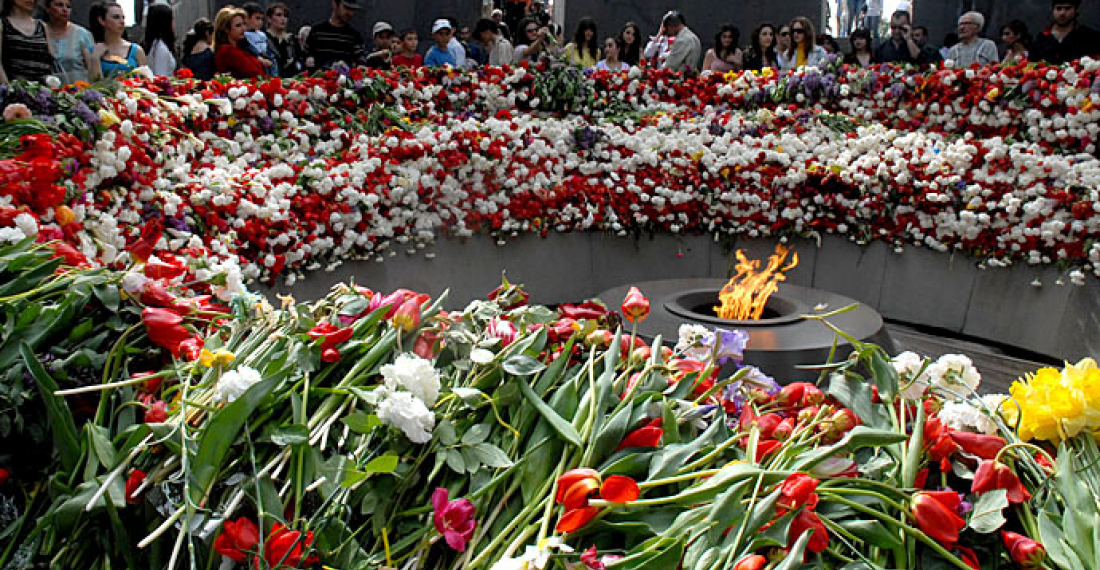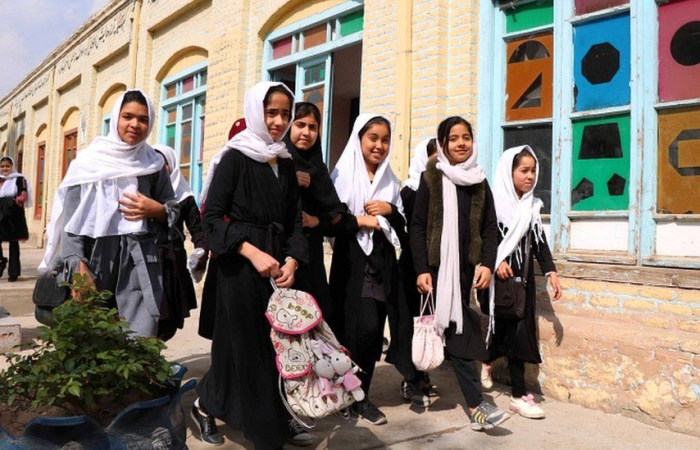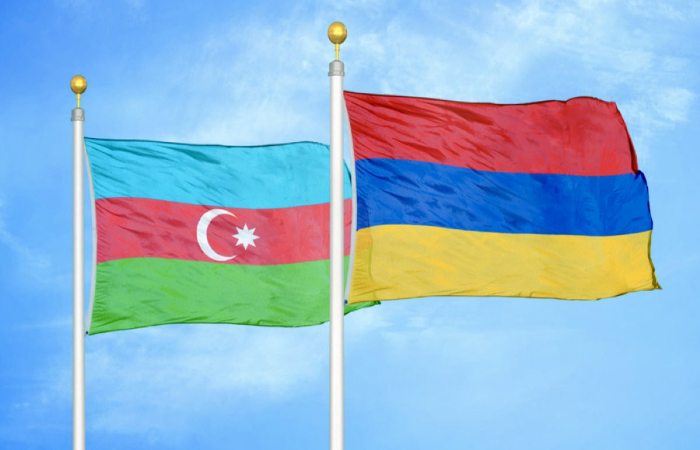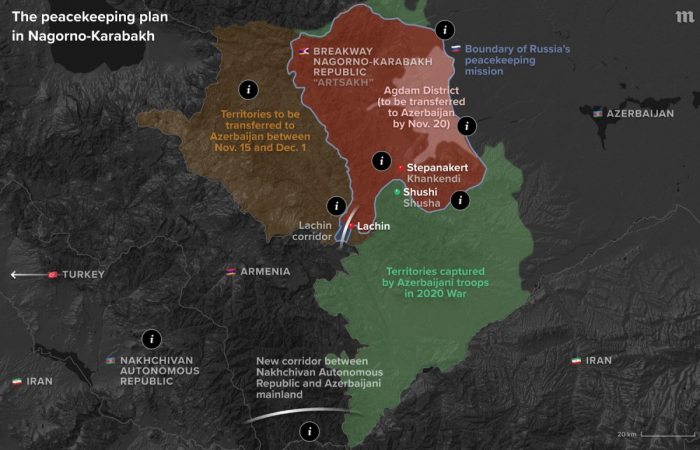A brawl broke out in Armenia’s National Assembly on 22 April after opposition lawmakers proposed new legislation to impose harsher penalties on those who deny or question the 1915 mass killing and deportation of up to 1.5 million Armenians by the then Ottoman Empire — and whether it should be recognised as genocide. The term, coined in the 1940s by Polish lawyer Raphael Lemkin, was partly inspired by the Armenian experience. Armenia already has laws addressing genocide denial, but this new initiative specifically targets anyone and not just those seeking to incite “hatred, discrimination, or violence.” Punishment of up to five years imprisonment would also be increased though the proposed changes are unlikely to pass a parliamentary vote.
The move comes in response to Nikol Pashinyan’s attempts to normalise relations with neighbouring Türkiye. The ultra-nationalist Armenian Revolutionary Federation –Dashnaktsutyun (ARF-D) views further criminalisation simply as another way to remove Pashinyan from power in elections scheduled for mid-2026. The Armenian-American rock band System of a Down also amplified opposition criticism of the embattled prime minister when bassist Shavo Odadjian shared an Instagram post featuring an image of Pashinyan overlaid with a red cross and the caption, “He who erases [...] history deserves to die.” Guitarist Daron Malakian further stirred up a frenzy by declaring that the band were “venomous Armenian vipers” and “will attack.”
Certainly, these actions seemed less intended to mourn or remember those that perished 110 years ago but more of incitement to hatred and possibly violence. In contrast, tens of thousands of Armenians in Yerevan took part in a solemn and respectful march to the Tsitsernakaberd memorial on 24 April. The evening before, however, a far smaller march by Dashnaktsutyun’s youth wing, the Armenian Youth Federation (AYF), also called for revenge. After publicly burning the Azerbaijani and Turkish flags, the activists hoisted torches into the night sky, reminiscent of scenes of far-right and neo-Nazi demonstrators in Europe and the United States. They also wore tops glorifying Operation Nemesis, a Dashnak campaign to assassinate Armenians, Azerbaijanis, and Turks in the 1920s.
Pashinyan again diluted his April 24 commemoration remarks referring to the Medz Yeghern, an Armenian term for the events of 1915, instead of solely mentioning genocide. Earlier this year, on an official visit to Switzerland, Pashinyan had already irked and attracted the ire of nationalists by arguing that Armenians must understand fully the reasons for 1915 in order to prevent similar in the future. Even the European Union Mission in Armenia (EUMA) stumbled into the controversy by first posting on X a commemorative message using the term “Armenian Genocide” before deleting it and posting a second without it. Like Obama before him, US President Donald Trump was also criticised by Armenian nationalists for using Medz Yeghern in his statement.
Part of the reason for this is the highly unlikely objective of claiming financial and territorial reparations from Türkiye. However, when the International Centre for Transitional Justice (ICTJ) was approached by the short-lived Turkish Armenian Reconciliation Committee (TARC) that functioned during the Kocharyan years, the New York-based legal organisation instead ruled that the 1948 Genocide Convention could not be applied retroactively. Nonetheless, the term genocide has long been weaponised domestically in Armenia.
During the February 2008 pre and post-election opposition protests in Armenia, the country’s first president was but one example. Addressing supporters outside the Opera in Yerevan, he often labelled the Kocharyan government as “Mongol-Tatar.” Elderly women among them would also curse police and label them “Turks.” Ironically, in the mid to late 1990’s, Ter-Petrosyan was himself regularly accused of “white genocide” as tens of thousands left Armenia to find better lives abroad. In August 2008, Ter-Petrosyan even accused the Georgian government of Mikheil Saakashvili of genocide in South Ossetia to justify the Russian invasion of Georgia that same month. As always, the term continues to be abused and instrumentalised for domestic political purposes.
Even Pashinyan used the term in 2010, accusing a new mayor, Karen Karapetyan, of planning to “commit genocide against personnel” in Yerevan’s City Hall.
Clearly, the circumstances of 1915 will be up for discussion in the event of Armenia-Türkiye normalisation, just as it was during the 2009 Armenia-Turkish Protocol Process, but criminalising and ultimately censoring informed and objective discussion can only prove counterproductive and keep Armenia in a vicious cycle of regional semi-isolation and mass out-migration. “Reconcile with reality,” one Pashinyan ally posted on X. “I understand that our collective tragedy and wounds are deep, and it’s very difficult to accept. But only by acknowledging defeat can we decide how to build a stronger Armenia going forward. A whole nation cannot be constantly dragged into the past and made part of already-lost agendas.”
Meanwhile, when France first considered outlawing denial of the Armenian Genocide in 2006, the late Hrant Dink vowed to travel to Paris to do just that. “I have been tried in Türkiye for saying the Armenian genocide exists, and I have talked about how wrong this is,” the late Turkish-Armenian newspaper editor murdered by a Turkish nationalist the following year said. “[…] I cannot accept that in France you could possibly now be tried for denying the Armenian genocide. If this bill becomes law, I will be among the first to head for France and break the law.”
“France, if it makes this bill law, will be hurting not only the EU, but Armenians across the world,” he warned. “It will also damage the normalising of relations between Armenia and Türkiye. What the peoples of these two countries need is dialogue, and all these laws do is harm such dialogue.” Some notable Armenian historians agree.
source: Onnik James Krikorian is a journalist, photojournalist, and consultant from the U.K. who has covered the Armenia-Azerbaijan conflict since 1994. Photo: The Tsitsernakaberd Genocide Memorial in Yerevan. Every year on 24 April, tens if not hundreds of thousands of Armenians march to the memorial to remember as many as 1.5 million who were massacred or deported from the then Ottoman Empire. Photo © Onnik James Krikorian 2008
The views expressed in opinion pieces and commentaries do not necessarily reflect the position of commonspace.eu or its partners.






